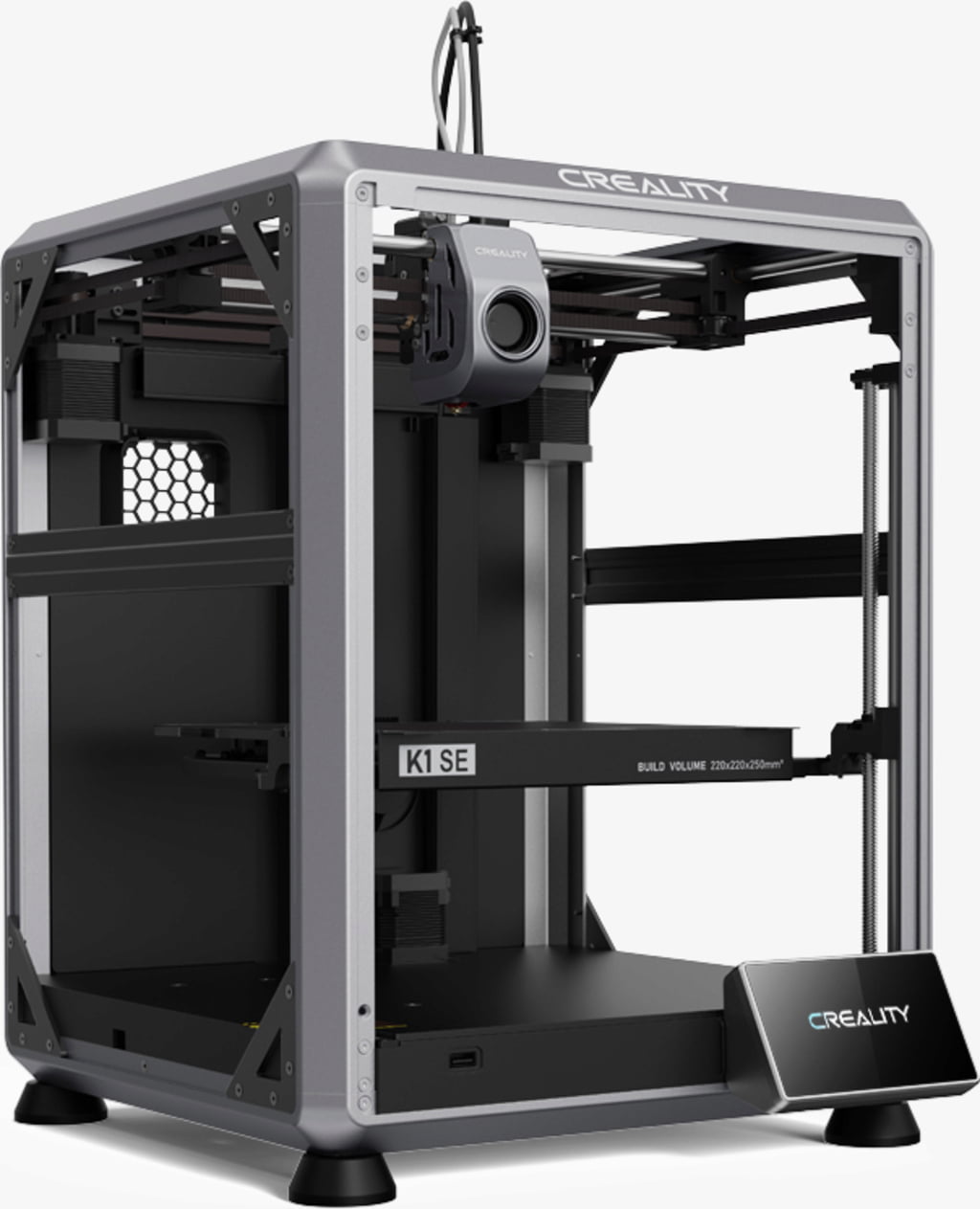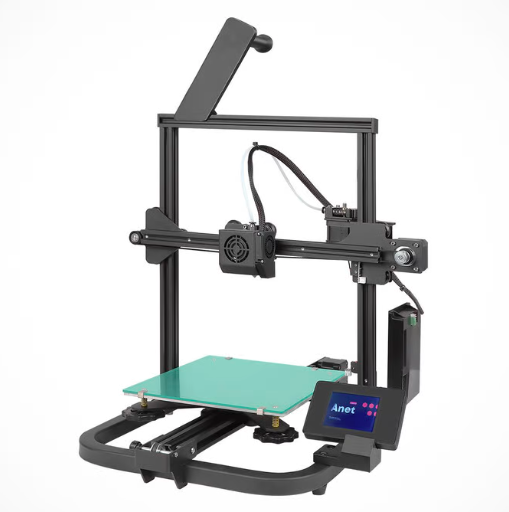Compare K1 SE vs A8 V2
Comparison between the best 3D printers
Choose the best 3D printer at the best price. The cheapest 3D printers are here.
Buy a 3D printer here with 3D Fila.
 |
 |
|
| Model | K1 SE |
A8 V2 |
| Printing Material | Filament | Filament |
| Buy Filament for Creality 3D K1 SE | Buy Filament forAnet A8 V2 | |
| Estimated price | $349,00 | $129,00 |
| Manufacturer | Creality 3D | Anet |
| Release Year | 2023 | 2021 |
| Print Volume [mm] | 220x220x250 | 220x220x250 |
| Printer Size [mm] | 355x355x480 | 428x441x486 |
| Weight [kg] | 10,24 | 6,2 |
| Power Loss Recovery | YES | NO |
| Enclosed printer | NO | NO |
| Bed Leveling | Automatic | Manual |
| Filament End Sensor | YES | NO |
| Bed type | Heated | |
| Power supply system | Direct Drive | Bowden |
| Standard nozzle | 0,4 | 0,4 |
| Maximum Nozzle Temperature [°C] | 300 | 230 |
| Maximum Bed Temperature [°C] | 100 | |
| Maximum printing speed [mm/s] | 600 | 150 |
| Filament holder | YES | YES |
| Camera for supervision | YES | YES |
| Recommended filaments | Hyper PLA, PLA, PETG, PET, TPU | PLA |
| Recommended slicers | Creality Print; Cura, Simplify3D e PrusaSlicer | Cura, Simplify, Slic3r, IdeaMaker |
| Maximum Resolution [mm] | 0,1 | 0,1 |
| Processor | ||
| Display | Display touchscreen 4,3'' | Display touchscreen 2,8'' |
| Power Supply | 110/220V / 350W | 110/220V / 250W |
| Connectivity | Ethernet / USB / Wi-Fi | SD / USB |
| Operating systems | Windows, Mac, Linux | Windows, Mac, Linux |
| Date of registration in the system | 2023-08-26 | 2022-11-10 |
| Release date | 2023 | 2021 |
| Extra features | The Creality K1 SE is a high-speed 3D printer with CoreXY system, capable of printing at up to 600mm/s with acceleration of 20000mm/s². It has a dual-gear extruder, easy-to-replace tri-metal nozzle, automatic leveling, and advanced features such as vibration reduction algorithms and intelligent operation. Its rigid cast aluminum frame ensures stability, while the open-source Klipper-based system offers freedom for customization. It is pre-assembled for a simplified and fast user experience. | The Anet A8 V2 is a Cartesian-XZ type 3D printer with a build volume of 220 x 220 x 250 mm, Ender 3 design and V-slot assembly. It has a 32-bit motherboard and touchscreen interface, promising ease of use. It uses open source firmware and has thermal failure protection. It stands out for its cable organization and the absence of a heated bed, focusing on energy savings and PLA printing. It comes with an external power adapter, aiming at greater safety, especially for beginners and educational use. |
| Support for multiple colors and materials (AMS and CFS) | NO | NO |
Notes * |
||
| Cost-benefit | 7 / 10 | 6 / 10 |
| Hardware | 3.5 / 10 | 0.5 / 10 |
| Tela | . | . |
| Print volume | 3 / 10 | 3 / 10 |
| Performance | 5 / 10 | 1 / 10 |
Conclusion |
| In conclusion, the comparison between the Creality 3D K1 SE and the Anet A8 V2 highlights significant differences in performance, features, and pricing. The K1 SE, while more expensive, offers advanced capabilities such as high-speed printing of up to 600mm/s, automatic bed leveling, and a dual-gear extruder. Its robust frame and superior nozzle temperature allow for a wider range of filament types, showcasing an emphasis on quality and efficiency. Additionally, the K1 SE's connectivity options and user interface, including a large touchscreen and Wi-Fi capabilities, further enhance its usability for those looking for a modern, feature-rich 3D printing experience. On the other hand, the A8 V2, although more budget-friendly, is simpler in terms of technology and performance. It focuses on basic functionality with its manual bed leveling and lower maximum printing speed. While it is suitable for beginners and educational settings, it lacks features such as automatic filament detection and power loss recovery, which may limit its appeal to more advanced users. Overall, if budget allows, the Creality K1 SE offers superior performance and features for more demanding applications, while the Anet A8 V2 serves as a practical choice for newcomers to 3D printing. Ultimately, the decision should be based on the user’s specific needs, budget constraints, and desired level of complexity in 3D printing. |

